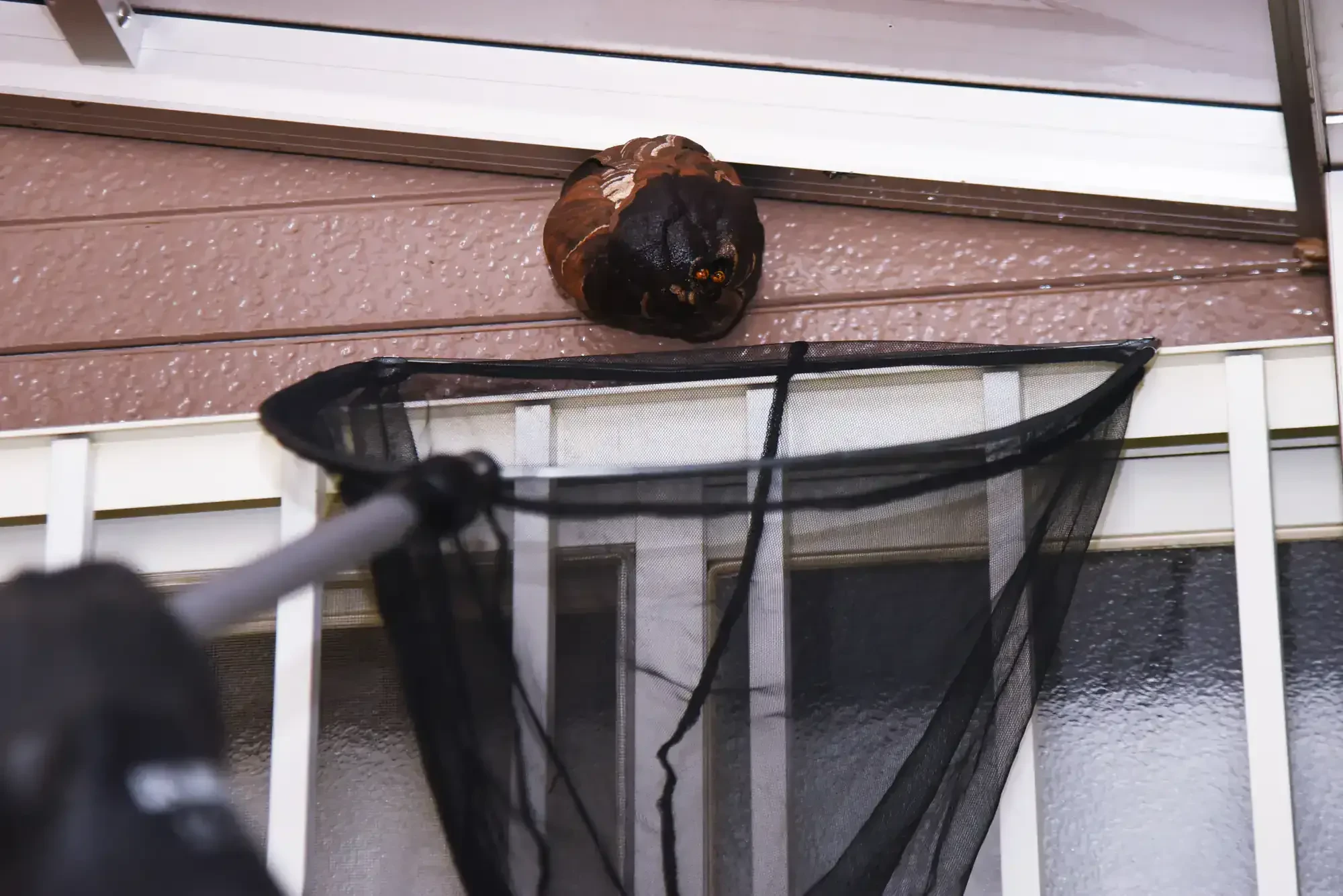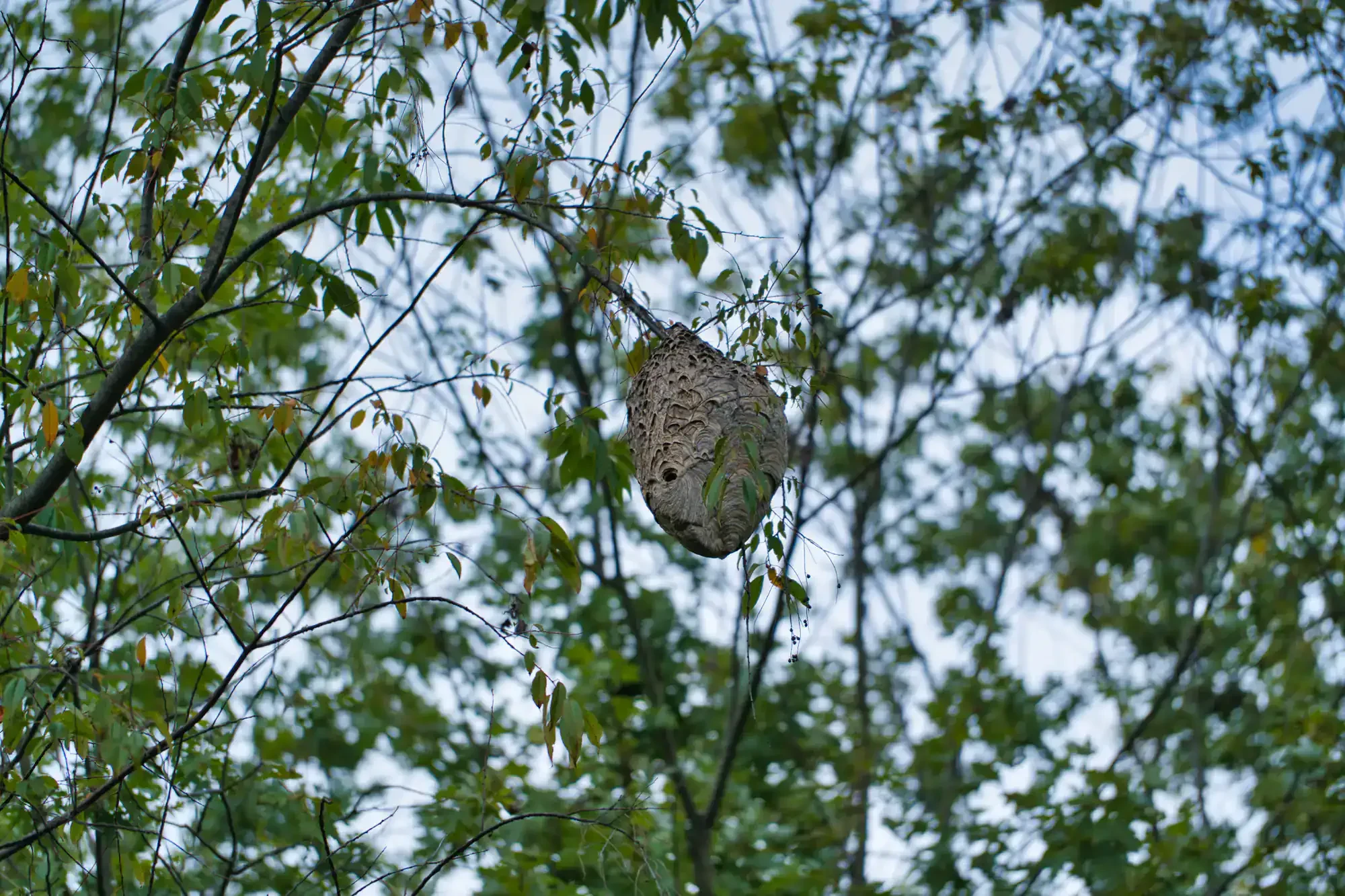
Hear from Our Customers

You’ll finally enjoy backyard barbecues without scanning for wasps. Your kids can play outside safely, and you can host gatherings without worrying about aggressive stinging insects crashing the party.
Professional yellow jacket removal means total elimination—not just the wasps you can see. We locate and destroy entire nest structures, including queens and developing larvae, so colonies can’t rebuild or relocate to other areas of your property.
When we’re done, you get lasting peace of mind. No more cancelled outdoor plans or keeping family members inside during Milford’s beautiful summer months when you should be enjoying your yard.
We’ve been eliminating yellow jacket threats in Milford since 2005. Owner Roger brings 26 years of hands-on experience to every removal job, and we’ve built our reputation on results that actually last.
Unlike companies that rotate different technicians through your property, you work with the same professional who knows your specific situation. This consistency means faster problem-solving and better long-term prevention strategies tailored to your Milford home’s unique challenges.
As a family-owned business serving Milford’s tight-knit community, we understand the stakes when aggressive yellow jackets move in near your home. We’ve helped hundreds of local families safely reclaim their outdoor spaces—and we back our work with genuine accountability.

First, we conduct a thorough inspection to locate all nests and identify the specific yellow jacket species. This matters because German yellow jackets often build inside Milford home wall voids, while Eastern yellow jackets prefer underground burrows—each requiring different elimination approaches.
Next, we treat during optimal hours when wasps are least active and most of the colony is inside the nest. Using professional-grade insecticide dust, we reach deep into nest structures to eliminate queens, workers, and developing larvae that DIY sprays can’t touch.
Finally, we handle specialized situations safely. Aerial nests up to 25 feet high get treated with extension equipment. Ground nests receive targeted applications that kill emerging wasps and prevent rebuilding. We never seal entry points until all activity stops—premature sealing forces yellow jackets to chew into your living spaces.

Ready to get started?
Our yellow jacket extermination includes complete nest location, species identification, and targeted treatment using commercial-grade materials unavailable to homeowners. We eliminate current colonies and apply preventive treatments to discourage future nesting attempts.
Milford’s suburban landscape creates ideal yellow jacket habitat—they commonly nest under decks, in wall voids around utility lines, and in underground spaces near landscaping. We inspect all these prime locations and treat potential problem areas before new colonies can establish.
You also get follow-up service if any activity continues after initial treatment. Unlike retail sprays that only kill individual wasps on contact, our systematic approach eliminates entire colony structures, including reproductive queens that keep producing new workers throughout Milford’s extended warm season.

Call immediately when you notice consistent wasp traffic in and out of a specific location—this indicates an established nest that will only grow larger and more dangerous. Early intervention is crucial because yellow jacket colonies can explode from dozens to thousands of members in just weeks.
In Milford, peak activity occurs during August and September when colonies reach maximum size and aggression levels. During this period, yellow jackets become increasingly desperate for food sources, making them more likely to attack perceived threats near their nests.
Don’t wait hoping they’ll disappear naturally. By late fall, new queens have already dispersed to overwinter and establish next year’s colonies. Professional removal during active season eliminates current threats and prevents future infestations in the same locations.
Yellow jacket attacks pose serious risks because these wasps sting repeatedly and often swarm when defending their nests. Unlike honeybees that die after one sting, a single yellow jacket can deliver multiple painful stings while releasing alarm pheromones that attract more defenders.
Multiple stings cause severe pain, extensive swelling, and can trigger dangerous reactions even in non-allergic individuals. Children and elderly family members face higher risks due to their smaller body size and potentially compromised immune systems.
For anyone with known insect sting allergies, yellow jacket encounters can be life-threatening. These aggressive wasps don’t provide warning before attacking, and they’ll pursue perceived threats much farther from their nests than other stinging insects. Professional removal becomes a medical safety priority when allergic family members are at risk.
Retail yellow jacket sprays are contact insecticides that only kill wasps they directly hit—they can’t reach queens deep inside nest structures who continue producing replacement workers. You might kill dozens of visible wasps while hundreds more remain safely inside the colony.
Most yellow jacket nests hide in locations where spray penetration is impossible—wall voids, underground burrows, or dense vegetation. Even successful contact kills often make surviving colonies more aggressive and likely to relocate elsewhere on your property.
Professional treatment uses insecticide dust that wasps carry throughout their nest systems, eliminating entire colonies including queens and developing larvae. We also have protective equipment and training to safely treat dangerous locations like high eaves or underground nests without triggering defensive swarms that endanger your family.
German yellow jackets frequently establish colonies inside Milford home wall voids, attics, and other enclosed structural spaces. If they’re already inside your walls, sealing exterior entrances will force them to chew through interior drywall—creating dangerous indoor stinging situations.
Wall-dwelling colonies require specialized elimination techniques. We inject targeted insecticide dust through entry points to kill colonies from within, ensuring queens can’t escape to establish new nests. All activity must cease before any openings can be permanently sealed.
Warning signs include buzzing sounds inside walls, wasps appearing indoors, or consistent traffic around small exterior wall openings. This situation demands immediate professional intervention because colonies continue expanding throughout summer, potentially causing structural damage while creating ongoing indoor stinging hazards for your family.
Professional yellow jacket elimination typically ranges from $150-400 depending on nest accessibility, colony size, and treatment complexity. Ground-level nests cost less than aerial colonies or wall-void infestations requiring specialized equipment and techniques.
We provide transparent upfront pricing with no surprise charges. Our service includes thorough inspection, complete colony elimination, and follow-up treatments if activity persists. We offer price matching for reasonable competitor quotes plus discounts for seniors, veterans, and first responders.
Professional removal costs far less than potential medical expenses from stings, property damage from failed DIY attempts, or ongoing stress from living with aggressive wasps threatening your family’s safety. Most Milford homeowners find our systematic approach provides better long-term value than repeated retail spray purchases that don’t solve the root problem.
Yellow jackets don’t reuse existing nests, but overwintering queens often select the same favorable locations if structural conditions remain attractive. This explains why you might see new activity in previously treated areas despite successful colony elimination.
New queens emerge from winter hibernation seeking protected nesting sites with characteristics similar to successful previous locations—wall voids, underground spaces, and weather-protected areas around Milford homes. They’re naturally drawn to structural features that provided advantages for earlier colonies.
Effective prevention involves sealing potential nesting sites during spring months when queens are location-shopping. We caulk utility penetrations, repair soffit gaps, and apply residual treatments to discourage nest establishment. This proactive approach dramatically reduces the likelihood of new colonies choosing your property for next season’s expansion.